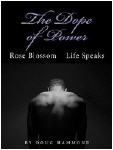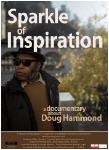Doug Hammond, “one of the great heroes of the American independent jazz scene,” has been living and working in Linz for years already. He has made a major impact on jazz here: as a professor (emeritus) at the Anton Bruckner University, as a promoter, and, with a commissioned work for Linz09, once again as a gifted composer and bandleader. Brian Dorsey spoke with Doug Hammond about his commissioned piece – and about the power of music.
Last year, his “Karlovy Vary (Karlsbad) Suite” for flute, cello and piano was premiered in the scope of the Karlovy Vary Jazz Festival. On May 25, Doug Hammond’s “Acknowledgement Suite” celebrates its world premiere at the Brucknerhaus in Linz. This composition spans a century of music history, and combines Afro-American and Afro-Caribbean influences with a contemporary composition style. The composer has dedicated each part of this Linz09-commisioned work to an important person in his life, like, for instance, his mother; the saxophonists Ernest “Zeke” Vann and Ernie Calhoun, who helped paved his way as a professional musician and supported him at the beginning of his career with words and deeds; as well as fellow musicians such as Julian Priester or Kirk Lightsey.
This year’s European Capital of Culture offered Hammond the opportunity to assemble a “dream band” with the artists of his choice. Supplemented with six horns, the Doug Hammond Tentet consists of Dwight Adams (tr), Wendell Harrison (cl/bcl), Roman Filiu (as), Stéphane Payen (as), Jean Toussaint (ts), Dick Griffin (tb), Kirk Lightsey (p), Aaron James (b), Howard Curtis (d), as well as the maestro himself (dr/conductor). “I already composed for larger and smaller ensembles in New York and Detroit,” said the energetic 66-year-old. “But what makes this ensemble different is, first of all, the quality of the musicians, and, secondly, that something like this hasn’t come together for a long time. It’s the combination of these musicians that allows this music to live.”
Hammond took his first compositional steps at the Howard W. Blake Junior High School for the Performing Arts in his hometown of Tampa, Florida. There he received a well-founded musical education in classical and marching band music, and played compositions from Art Blakey’s Jazz Messengers and Julian “Cannonball” Adderley. Compositional influences are also plentiful: Tchaikovsky, Ravel, Debussy, Ellington, Strayhorn, Tadd Dameron, Don Redman, Billy Moore, Sam Rivers… Already in the mid 60s, as he was working with O.C. Smith, Hammond wrote pieces for oboe and melodica, so that he could play together with Kirk Lightsey.
After nearly half a century as a professional musician, Doug Hammond has been acclaimed as “one of the great heroes of the American independent jazz scene” and has increasingly been called a “legend”. What does he think about that? “I see myself as a simple worker,” commented Hammond. “I want to make music available to the people, so that they can experience it live. Recognition is alright, the positive resonance from the different prizes. These rare moments are good, but I have never sought recognition. I simply want to be heard. And when I say ‘I,’ it really isn’t about me, but rather about ‘we,’ the musicians who play this music. When what we do is appreciated, liked, loved, it means much more to me. Except for my children, I don’t have to prove anything to anybody. If I receive recognition, but can’t play music, it is totally meaningless to me.
And what about the meaning of music?
“I believe that music is something that people need, and that what we do is useful. The more that can happen, the more my life has meaning for me. Music is like the air… And it has been a part of our culture for thousands of years. I can’t imagine doing anything else that makes sense for me. I want to continue to progress, to make more music, to work together with more artists in more parts of the world.”
Moving forward; that means searching for new things?
“‘New’ is always an old word in every language. I don’t like this idea of being ‘new’ or ‘old’ at all. Every morning when I wake up, I am ‘modern.’ As long as I live, I am ‘modern’ – and even that is not enough! And jazz is a music that doesn’t allow racism, just from its origins alone. For me, jazz not only represents the possibility of freedom, but also of adventure. I still feel with my whole heart that music is the only thing that can save our planet. My intention is to present the best possible music and to bring it out into this world. There, where we are playing and communicating with the audience, the audience is ‘playing’ with is. If we, as a group of musicians, succeed in creating a musical experience, an adventure in sound and vision, then we have achieved our goal.” Brian Dorsey
|




